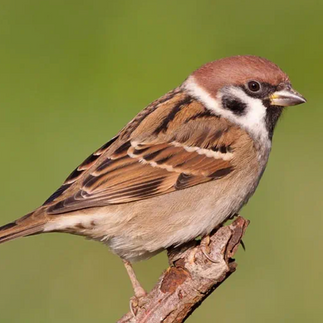Embrace the common garden weed
- Karen Thomas

- Feb 7, 2024
- 6 min read
It's that time of year again, the Imbolc has come and gone and the promise of spring is in the air. The perennials are starting to regenerate and the garden is considering springing back to life. As I get excited about my Peonies, Penstemon and Verbascum, I notice that not only are my favourites waking up but so are the ‘weeds’. It got me to thinking about what we consider weeds, their purpose and the role they can play in our gardens.
Basically, they’ve got a bad rep and have been traditionally exterminated as they are considered unsightly. It's true that most of what we consider weeds are quite invasive and will soon make themselves very/too at home in your garden. We have been conditioned to believe that they are undesirable and must be got rid of, but actually if we are gardening from a biodiversity point of view they are incredibly important to local wildlife and each serves a different purpose and supports different species.
I thought it would be good to look at a some of the weeds that are commonly found in our southwest corner of London to learn more about the function they serve. Ultimately we want our gardens to support as much natural life as possible and by knowing what purpose different plants serve, we can start changing our minds about what we consider weeds and how much space we give them in our gardens - even if its tucked away behind the shed or at the back of a border.
That said, let’s delve into the enchanting world of Dandelions, Pentaglotis, Herb Robert, Wood avens and Ribwort plantain – each an essential player in supporting our local ecosystems.
Dandelions (Taraxacum officinale) are commonly seen as lawn nuisances, but these bright yellow flowers are essential contributors to biodiversity. Dandelions support a variety of wildlife through their flowers, leaves, and seeds, playing a crucial role in the ecosystem in several ways:
Pollinators: Bees: Dandelion flowers provide an early-season nectar source for bees, particularly honeybees and bumblebees. The abundance of nectar and pollen in dandelions helps sustain bee populations, supporting their survival and contributing to the pollination of other plants in the area. Butterflies: Dandelions attract butterflies, such as the Small Tortoiseshell and Painted Lady, which seek nectar from the flowers. Seed-Eating Birds: Goldfinches and Sparrows: Dandelions produce fluffy seeds attached to a parachute-like structure, facilitating wind dispersal. Seed-eating birds, especially goldfinches and sparrows, feed on these seeds.
Caterpillars of Various Butterflies: Dandelions serve as a food source for the caterpillars of certain butterfly species, including the Painted Lady and Red Admiral. The leaves of dandelions are consumed by these caterpillars during their development.
Soil Health and Microorganisms: Microorganisms: Dandelions play a role in improving soil health. Their deep taproots break up compacted soil, allowing water and nutrients to penetrate deeper. This benefits soil-dwelling microorganisms and contributes to overall soil fertility.
Beneficial Insects: Ladybugs and Predatory Beetles: Dandelions attract ladybugs and other beneficial insects that prey on aphids and other pests. This natural pest control helps maintain a balance in the ecosystem.
It is important to recognise the ecological importance of dandelions and their role as valuable contributors to biodiversity rather than mere garden intruders.
Danelions and a Small Tortoiseshell Butterfly
Pentaglotis, commonly known as green alkanet, is a wildflower native to the United Kingdom and Europe. It is a member of the borage family (Boraginaceae) and is recognized for its striking blue flowers and hairy leaves. This plant plays a significant role in supporting wildlife through its interactions with various insects.
Pollinators: Bees and Butterflies: The vibrant blue flowers of pentaglotis are attractive to pollinators, particularly bees and butterflies. These insects visit the flowers to collect nectar and, in the process, facilitate pollination by transferring pollen between flowers. This reproductive interaction is vital for the plant's ability to produce seeds and ensure its continued existence.
Insect Diversity: Hoverflies and Beetles: Pentaglotis contributes to the overall biodiversity by providing habitat and food sources for insects such as hoverflies and beetles. These insects may find shelter, lay eggs, or forage for food on or around the plant. This creates a microecosystem within the pentaglotis habitat, supporting a variety of insect life.
Food Source: Caterpillars: Some butterfly species, like the Comma butterfly (Polygonia c-album), use pentaglotis as a host plant for their caterpillars. The caterpillars feed on the leaves, utilizing the plant as a food source during their developmental stages. This mutualistic relationship is crucial for both the butterfly and the plant.
Seed Dispersal: Birds and Small Mammals: Once pentaglotis produces seeds, it contributes to the diet of birds and small mammals that feed on them. These animals play a role in seed dispersal, helping the plant colonize new areas and contributing to its overall distribution.
In our urban gardens Pentaglotis do behave a bit badly and are the thugs of the weed world, so do be mindful of them invading your beds - As valuable as they are for the garden, they are best left to areas of the garden that are hidden, Behind the shed or even a group of them around the base of a shady tree where nothing else is trying to grow. Always take them out of borders or soon there will be nothing else and that is not good for biodiversity either!
NB - it is quite easy to mistake foxgloves for Penteglotis, particularly when they are young. One good way to tell the difference, is that foxgloves have smooth velvety leaves and Pentaglotis as hairy and not that pleasant to touch!
Scarlett Tiger Moth and Pentaglotis
Herb Robert (Geranium robertianum), also known as red robin or storksbill, is a common wildflower found in the United Kingdom. This versatile plant supports a variety of wildlife through its flowers, leaves, and seeds, contributing to the overall biodiversity of its habitat.
Pollinators: Bees and Butterflies: The small, pink to magenta flowers of Herb Robert attract pollinators such as bees and butterflies. These insects visit the flowers for nectar, facilitating the transfer of pollen and aiding in the plant's reproduction.
Seed-Eating Birds: Finches and Sparrows: Herb Robert produces distinctive beak-like fruits that explode when touched, dispersing seeds in the process. Seed-eating birds, particularly finches and sparrows, feed on these seeds, contributing to the plant's seed dispersal strategy.
Shelter and Nesting Sites: Insects and Small Animals: The dense, low-growing foliage of Herb Robert provides shelter for various insects, including spiders and beetles. Additionally, the plant may offer suitable nesting sites for small animals, such as rodents or birds, this contributes to overall habitat diversity in our gardens.
Caterpillars: Caterpillars of Butterflies: The leaves of Herb Robert can serve as a food source for the caterpillars of certain butterfly species such as the Brown Argus, Common Blue and Orange Tip.
Decomposers: When Herb Robert plants die back, they contribute organic matter to the soil, supporting soil-dwelling microorganisms and decomposers. This aids in nutrient cycling and overall soil health.
Not only does herb Robert do all these amazing things, I also think it is a very pretty plant. This said it does like to take over and will do so given the opportunity - don’t be afraid of being a bit ruthless if its getting out of control, once it is in your garden there will be no shortage and it will come back.
Ribwort Plantain (Plantago lanceolata) is a common wild plant found in a variety of habitats, including meadows, lawns, and roadsides. This plant supports various forms of wildlife through its structure, flowers, and seeds, contributing to the overall biodiversity of its environment. Here's how Ribwort Plantain interacts with wildlife:
Pollinators: Bees and Butterflies: The slender spikes of small, inconspicuous flowers on Ribwort Plantain are visited by pollinators such as bees and butterflies. These insects seek nectar from the flowers, contributing to the plant's reproduction by aiding in the transfer of pollen.
Seed-Eating Birds: Finches and Sparrows: Ribwort Plantain produces numerous small seeds, and these seeds are a food source for seed-eating birds, particularly finches and sparrows. The seeds are held in cylindrical heads and are easily accessible to these birds.
Shelter for Insects: Beetles and Invertebrates: The basal rosette of ribbed leaves and the overall structure of Ribwort Plantain provide shelter for various insects, including beetles and invertebrates. These insects may find refuge in the dense foliage and contribute to the overall biodiversity of the plant's habitat. They also attract many types of Aphids, and although these are not particularly desirable in the garden, they do attract a wide range of predators which helps boost and create a healthy eco-system.
Host for Butterfly Larvae: Lepidoptera Species: Some species of Lepidoptera, such as butterflies and moths, use Ribwort Plantain as a host plant for their larvae. The caterpillars of certain butterflies may feed on the leaves, incorporating Ribwort Plantain into their life cycle.
Soil Health: Decomposers: When Ribwort Plantain plants die back, they contribute organic matter to the soil. This supports soil-dwelling microorganisms and decomposers, playing a role in nutrient cycling and overall soil health.
While Ribwort Plantain may not be as showy as some garden plants, its ecological significance lies in its ability to provide food, shelter, and support for various forms of wildlife. Recognizing and preserving the role of native plants like Ribwort Plantain contributes to the overall health and balance of ecosystems.
Heath Fritiiary Butterfly, Ribwort Plantiain and Sparrow
If you are interested in learning more about any of the creatures featured in this post, or fancy a bit of butterfly or beetle spotting, it is well worth visiting the https://butterfly-conservation.org or the https://www.wildlifetrusts.org/wildlife/how-identify/identify-beetles for more info.






























Comments